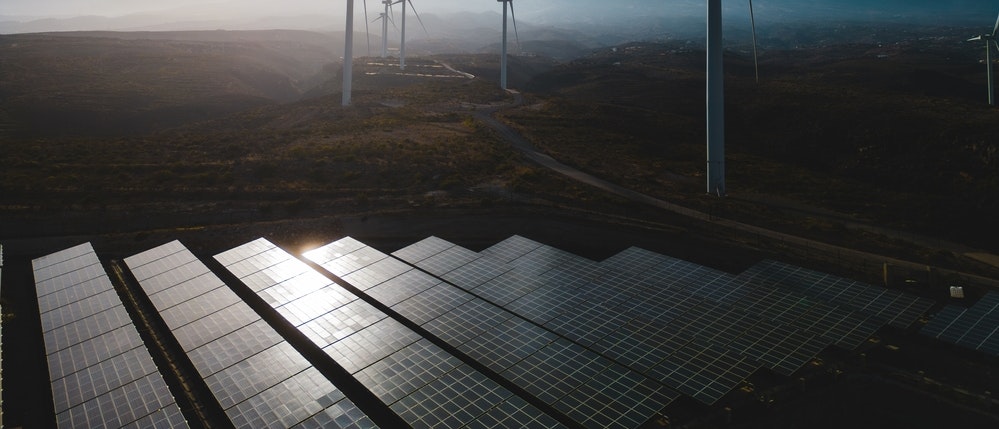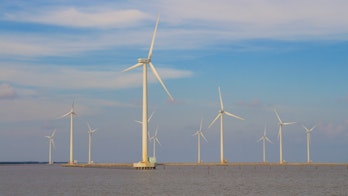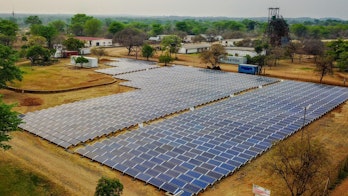
Investment
The financial choices shaping our energy futures
Globally, governments, households and the private sector invested over $3 trillion in energy in 2024 – more than ever before. The allocation of this spending has major consequences for energy security, affordability and transitions around the world.
The IEA regularly tracks capital flows in the energy sector, identifying key trends and studying their impact. Analyses such as our flagship World Energy Investment report, published annually, explore how investors are assessing risks and opportunities across all areas of fuel and electricity supply, critical minerals, energy efficiency, research and development and energy finance.
The Agency also supports governments and industry as they work to reduce barriers to investing in secure, affordable and clean energy. Our analysis is designed to support policy makers and investors by enhancing transparency around economic and financing trends, the cost of capital and profit dynamics. We also explore how capital markets and innovative financing instruments can drive greater investment in the energy sector – especially in emerging and developing economies, where data is often limited.
World Energy Investment
Investment in energy was on track to reach $3 trillion in 2024
Spending on grids is rising and was on track to reach $400 billion in 2024, having been stuck at around $300 billion annually between 2015 and 2021. The increase has been largely due to new policy initiatives and funding in Europe, the United States, China and some countries in Latin America.
Global investment in clean energy and fossil fuels, 2015-2024
OpenInvestments in fossil fuels see larger equity stakes, while debt financing is important for clean energy
The structure of energy investment varies across regions and sectors. Advanced economies rely more heavily on financing led by the private sector, while over half of investments in emerging and developing economies are driven by governments and state-owned enterprises. Debt financing has become a cornerstone of clean energy projects in emerging and developing economies, but high debt-to-GDP ratios present a significant obstacle. To overcome these challenges, concessional financing and innovative mechanisms from DFIs are essential, while risk-sharing instruments and supportive policies can help attract private capital.
Who is investing in energy around the world, and who is financing it?
Average annual energy-related investment by instrument and by sector, 2015-2023
OpenEmerging and developing economies
While emerging and developing economies represent two-thirds of the global population, only 54% of energy investments were set to go towards these markets in 2024. Though energy demand is growing the fastest in these countries, they face persistent barriers to accessing capital, including high financing costs tied to real and perceived project risks and regulatory frameworks that may not fully support investment needs.
The IEA conducts extensive analysis to identify solutions to overcome these barriers. For instance, in 2024, we prepared a Roadmap to Increase Investment in Clean Energy in Developing Countries in support of Brazil’s G20 presidency, outlining key actions governments, development finance institutions and the private sector should take to accelerate financing for clean energy projects. Additionally, through our Cost of Capital Observatory launched in 2022, the IEA actively tracks the financing climate for energy projects in emerging and developing economies, with the aim of enhancing transparency in the energy sector and building investor confidence, particularly in regions where data on financing costs is limited.
The IEA also works with government partners around the world, supporting their efforts to increase energy investment. Collaboration with partners in Southeast Asia and beyond is expanding through the establishment of the IEA’s new Southeast Asia Regional Office, while the 2024 edition of the Southeast Asia Energy Outlook features a timely and comprehensive overview of investment trends in the region.
Building on recent work to support governments in Africa, the IEA will publish analysis in 2025 on financing energy access and grid transmission across the continent. The Agency is also working closely with bilateral partners like Kenya to develop an investment plan for the country's clean cooking strategy, and with Uganda to create a plan for financing the expansion of grid transmission.
Selected analysis
Carbon markets
For more than 25 years, the IEA has conducted in-depth analysis on carbon markets – from compliance instruments, such as carbon taxes and emissions trading systems, to crediting mechanisms, such as carbon credit markets. The goal has been to increase global understanding of how these tools can be leveraged to meet energy and climate goals while stimulating investment to meet energy priorities.
The IEA also co-hosts the annual IEA-IETA-EPRI Workshop on Greenhouse Gas Emissions Trading, bringing together policy makers, industry leaders and researchers to discuss the latest developments and trends in carbon markets and the energy sector. In 2025, the workshop will mark its 25th anniversary.
Programmes and initiatives
The IEA is actively tracking the cost of capital for clean energy projects in emerging and developing economies to enhance transparency in the energy sector and build investor confidence, particularly in regions where data on financing costs is limited.
The IEA is actively tracking the cost of capital for clean energy projects in emerging and developing economies to enhance transparency in the energy sector and build investor confidence, particularly in regions where data on financing costs is limited.
This initiative includes a dashboard that offers free data on financing costs for clean energy projects, tools and analysis to help governments identify and address investment risks, and case studies showcasing successful strategies for mobilising capital.
The Financial Industry Advisory Board (FIAB) is an IEA-led initiative that aims to enable dialogue between leading actors from the finance community – including banks, investors and international financial institutions – with a view towards expanding the participation of capital markets in financing a secure energy system.
The Financial Industry Advisory Board (FIAB) is an IEA-led initiative that aims to enable dialogue between leading actors from the finance community – including banks, investors and international financial institutions – with a view towards expanding the participation of capital markets in financing a secure energy system.
Participants representing a diverse range of financial institutions are invited to attend an annual event hosted at the IEA headquarters in Paris, and regional summits – the latest held in Singapore – are also organised to encourage broad participation across geographies.
World Energy Investment 2024
The World Energy Investment report highlights key aspects of the current energy investment landscape. The 2024 edition includes first-of-its-kind analysis on the sources of investment and finance in the energy sector. It also compares investment trends in clean energy and fossil fuels, as well as the geographic distribution of these investments.



